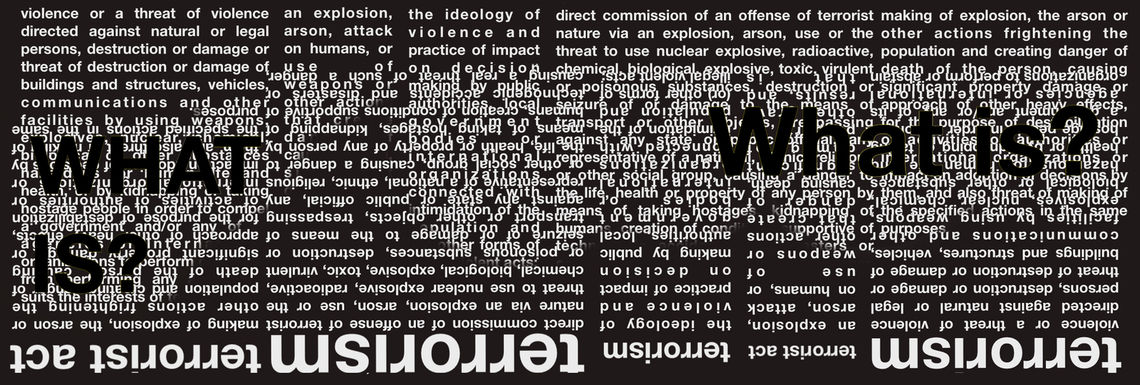
Lawmakers in Armenia came up with an arguably obscure definition, broadening the scope of what is considered a terrorist act. The motivation of the perpetrators indicated in the text is rather vague and phrases like ‘an offence of terrorist nature’ or ‘other acts entailing dangerous consequences’ can lead to an inconsistent and unjust application of the law and charge regime opponents over ‘terrorist goals.’ By the same token, the National Strategy on the Fight against Terrorism introduced back in 2012[14] also does not shed light upon the issue. Yet, an important question arises: how is it possible to tackle a phenomenon which is not even defined?
We could probably find the answer in the Criminal Code of the Republic of Armenia, where Article 217 defines this criminal offense as:
Terrorism, is any action, or the threat of action, intended to cause death or serious bodily injury to a civilian or to any other person not taking an active part in the hostilities in a situation of armed conflict, when the purpose of such action, by its nature or context, is to intimidate a population, or to exert pressure on a government body or an international organization or an official to make a decision or to do an act, or to abstain from these; as well as any other action recognized as terrorism by international treaties of the Republic of Armenia except for those specified under Article 218 of this Code, shall be punished with imprisonment for a term of five to ten years, with or without confiscation of property.[15]
terrorism – the ideology of violence and practice of impact on decision making by public authorities, local government bodies or international organizations connected with intimidation of the population and (or) other forms of illegal violent acts;
act of terrorism – making of explosion, the arson or other actions frightening the population and creating danger of death of the person, causing significant property damage or approach of other heavy effects, for the purpose of destabilization of activities of authorities or international organizations or impact on adoption of decisions by them, and also threat of making of the specified actions in the same purposes.
the unlawful use of force and violence against persons or property to intimidate or coerce a government, the civilian population, or any segment thereof, in furtherance of political or social objectives (28 C.F.R. Section 0.85).[11]
terrorism – violence or a threat of violence directed against natural or legal persons, destruction or damage or threat of destruction or damage of buildings and structures, vehicles, communications and other facilities by using weapons, explosives, nuclear, chemical, biological or other substances hazardous for human life and health, or by kidnapping or taking hostage people in order to compel a government and/or any of its agencies or international organizations to perform or abstain from performing any action that suits the interests of terrorists;
terrorist act – an explosion, arson, attack on humans, or use of weapons or other actions that create danger of causing death, significant damage of property or other grave results, and that is committed for terrorist purposes; or a threat to commit a terrorist act;

